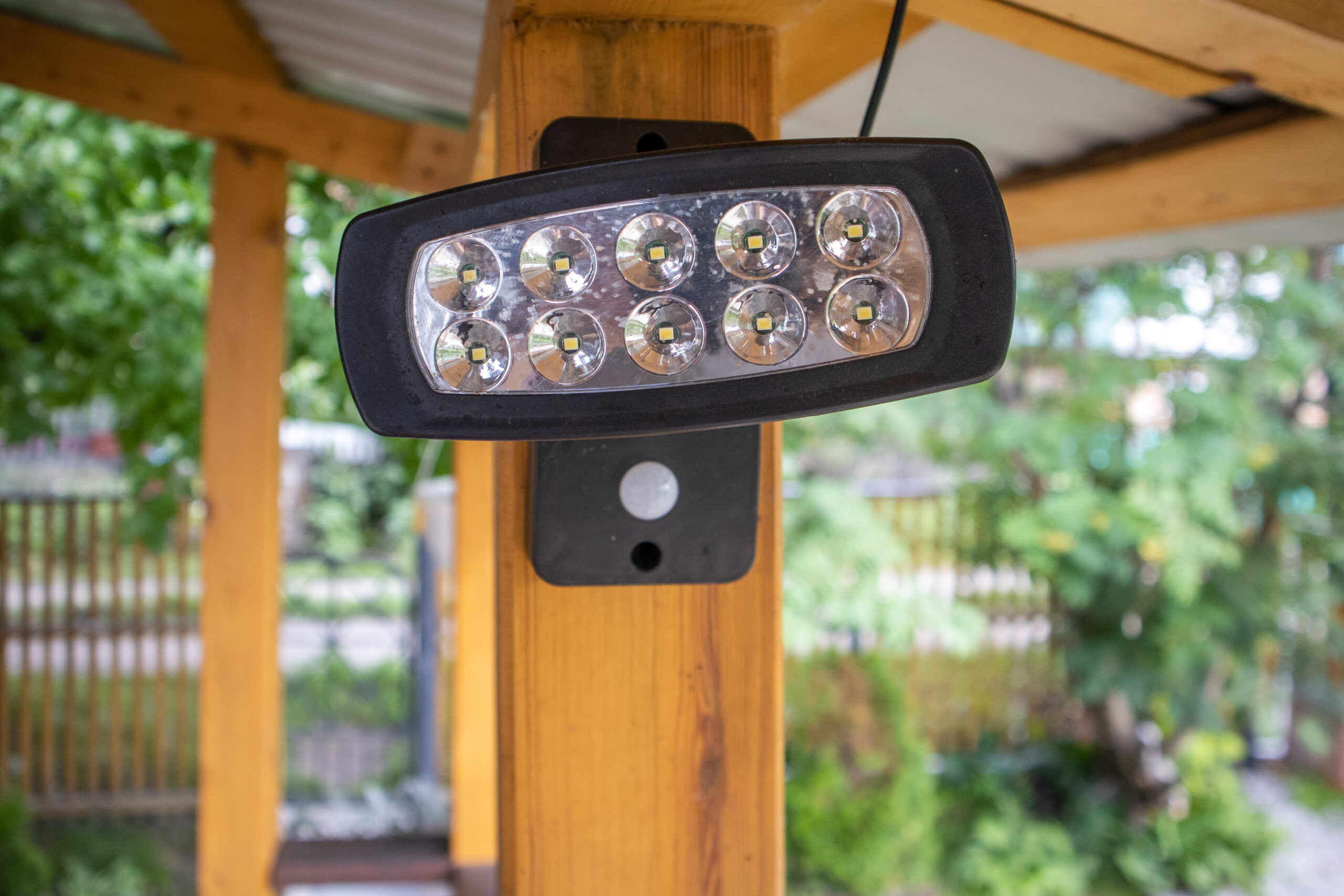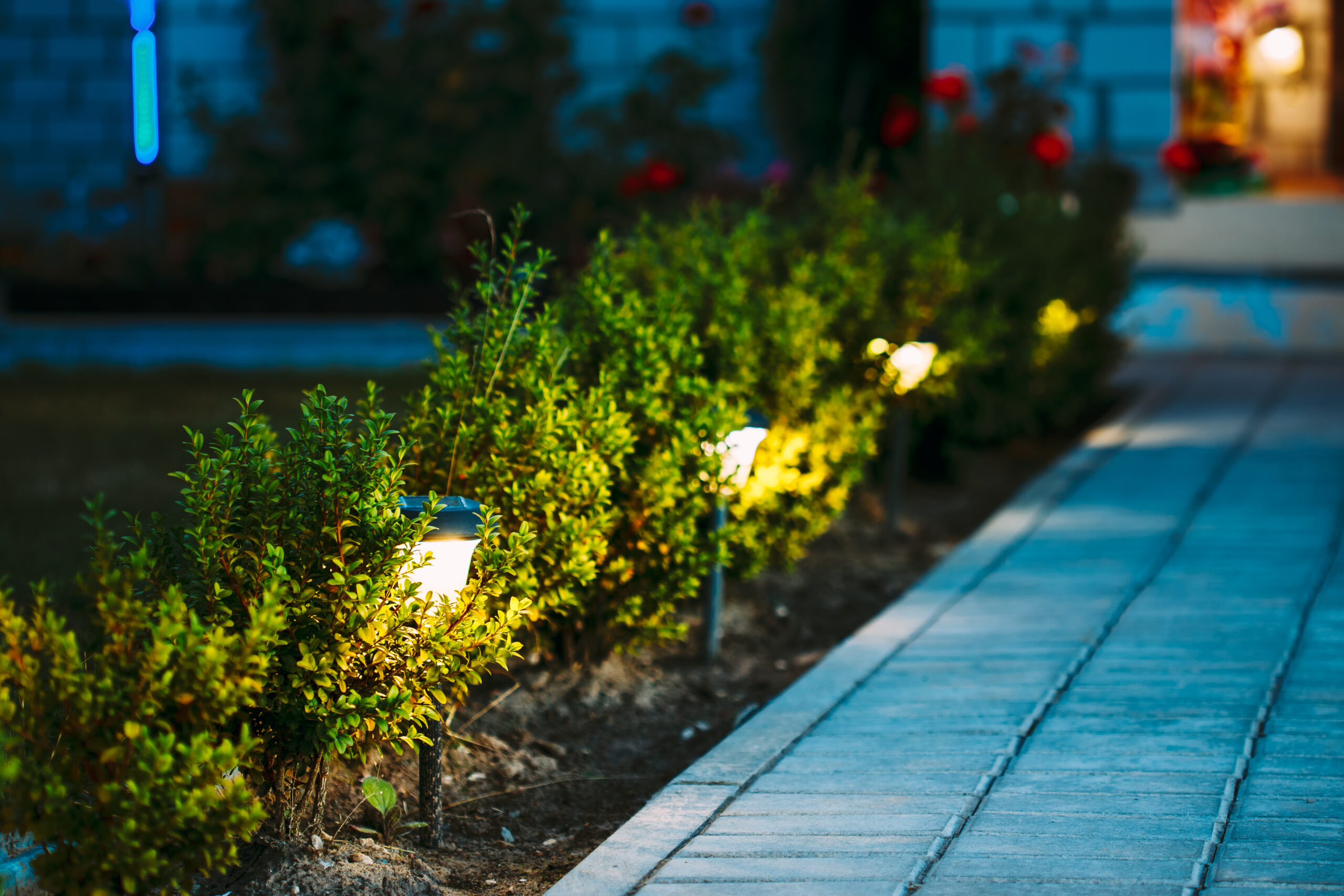Light sensor installation is a simple yet powerful way to improve security, save energy, and add convenience to your home or business in Boca Raton. Whether you want automatic lighting for safety or energy-efficient outdoor lights, choosing the right type of light sensor is key to getting the best results.
A recent client in Boca Raton reached out to us after experiencing high electricity bills due to leaving outdoor lights on all night. We installed motion-activated light sensors, which only turned on when movement was detected. Within the first month, they saw a significant drop in energy usage while maintaining the security they needed. This is just one example of how light sensors can benefit homeowners and businesses alike.
According to the U.S. Department of Energy,motion sensor lighting can reduce energy consumption by up to 50%, making it an excellent investment for anyone looking to cut costs and improve efficiency. In this guide, we’ll explore different types of light sensors, their benefits, and how to choose the right one for your needs.
What Is Light Sensor Installation?
Light sensor installation involves integrating automatic lighting systems that respond to changes in their environment. These sensors detect movement, changes in natural light levels, or specific triggers to turn lights on or off without manual operation.
Homeowners and businesses in Boca Raton use light sensors for various purposes, such as enhancing security, reducing energy waste, and improving convenience. With Florida’s sunny weather and frequent storms, light sensors can be a smart addition to any property, ensuring that outdoor and indoor lights are used efficiently.
9 Effective Ways Light Sensor Installation Enhances Boca Raton Homes
Installing light sensors provides numerous benefits beyond just automation. Here are nine ways they can improve your home or business in Boca Raton:
Improved Security

A well-lit property is a safer property. Light sensors can act as a deterrent against burglars and trespassers by automatically turning on when movement is detected. This sudden illumination can startle intruders and make them think twice before approaching your home or business.
For commercial properties, having motion-activated lighting around entrances, parking lots, and storage areas increases safety for employees and customers while preventing vandalism or break-ins. Homeowners can use these sensors in backyards, driveways, and entry points to ensure their property remains protected at all times.
Energy Savings
Leaving lights on unnecessarily wastes electricity and increases energy costs. With light sensors, your lights will only be on when needed, significantly reducing energy consumption.
For example, outdoor floodlights that remain on all night can consume a large amount of electricity. By installing motion sensors, the lights will only activate when someone approaches, providing security without excessive energy use. Over time, these savings add up, making light sensors a cost-effective solution for both residential and commercial properties.
Convenience and Automation
Imagine walking into a room, and the lights automatically turn on—no need to search for a switch. Light sensors add a level of convenience that makes everyday tasks easier, especially in areas like hallways, garages, and bathrooms where manual switches may be inconvenient.
For businesses, automation can improve operations by ensuring lights turn on in workspaces when employees arrive and off when the area is empty. This eliminates the issue of lights being left on overnight or in unoccupied areas, leading to additional energy savings and efficiency.
Extended Bulb Lifespan
Constantly leaving lights on shortens the lifespan of bulbs, leading to frequent replacements and additional costs. Since light sensors ensure lights are only used when necessary, bulbs last longer, reducing maintenance time and expenses.
LED bulbs, which are commonly used with sensor-based lighting systems, already have a longer lifespan than traditional incandescent bulbs. When paired with light sensors, their efficiency is maximized, ensuring that they operate only when required, which extends their life even further.
Better Outdoor Lighting Control
Outdoor lighting is essential for security, aesthetics, and safety. However, keeping exterior lights on throughout the night can be costly and wasteful. Dusk-to-dawn light sensors are an excellent solution, as they automatically turn outdoor lights on at sunset and off at sunrise.
These sensors are perfect for landscape lighting, pathways, and entrances, ensuring that your home or business remains illuminated at the right times without manual intervention. You no longer have to worry about forgetting to turn off the lights in the morning or adjusting them seasonally.
Enhanced Safety for Walkways and Driveways
Dark pathways and driveways can be hazardous, leading to trips, falls, or accidents. Light sensors provide an added layer of safety by illuminating these areas as needed.
For homeowners, having well-lit entryways and sidewalks reduces the chances of guests or family members tripping in the dark. In commercial settings, motion-activated lighting in parking lots and walkways ensures that customers and employees can navigate safely at night.
Increased Property Value

Investing in automated lighting systems like light sensors can increase your property’s value. Smart and energy-efficient features are attractive to potential buyers and can make your home or business more appealing in a competitive market.
Homebuyers look for modern upgrades that enhance security, convenience, and energy efficiency. Commercial buyers and business owners also value properties with built-in automated lighting solutions that reduce operational costs and improve security.
Customizable Settings
Many light sensors allow users to adjust sensitivity levels, detection range, and light duration. This means you can fine-tune the system to fit your specific needs, whether you want a quick response for security lighting or a slower transition for ambient lighting.
Customizable settings ensure that your lighting system works exactly how you need it to, whether you want lights to stay on longer after detecting motion or activate only in complete darkness.
Smart Home Integration
The rise of smart home technology means that many light sensors are now compatible with voice assistants and mobile apps. Homeowners can control their lights through Alexa, Google Home, or Apple HomeKit, adjusting settings and monitoring usage from anywhere.
For businesses, integrating light sensors into smart security systems ensures that lights can be activated remotely or in sync with other security measures, such as cameras or alarms.
Choosing the Right Type of Light Sensor
With so many options available, it’s important to choose the right light sensor for your specific needs. Here are the main types and their ideal applications:
Motion Sensors
These sensors activate lights when movement is detected, making them ideal for security lighting, driveways, and entrances. Options include:
- Passive Infrared (PIR) Sensors: Detect body heat and motion, commonly used for home security.
- Microwave Sensors: Use microwave signals to detect motion, working well in all weather conditions.
Dusk-to-Dawn Sensors

These sensors automatically turn lights on at sunset and off at sunrise, perfect for landscape and exterior lighting.
Occupancy Sensors
Common in indoor spaces, these sensors detect when someone enters a room and turn lights on or off accordingly, ideal for bathrooms, garages, and offices.
Photoelectric Sensors
These sensors adjust indoor lighting based on natural light levels, helping to maintain a comfortable and energy-efficient environment in commercial settings.
Timer-Based Sensors
Allow users to set specific times for lights to turn on and off, useful for businesses operating on a schedule.
Frequently Asked Questions
- Do light sensors work in all weather conditions?
Yes, most outdoor light sensors are designed to withstand various weather conditions, including rain, wind, and humidity. However, extreme fog or heavy storms may slightly reduce their effectiveness.
- Can I install light sensors on existing light fixtures?
In many cases, yes. Some sensors can be added to existing fixtures, while others may require a new compatible lighting system for optimal performance.
- How do I adjust the sensitivity of my motion sensor lights?
Most motion sensors have an adjustable sensitivity setting, which can be changed using dials or a control panel. This allows you to fine-tune how easily the light activates in response to movement.
- Do light sensors consume electricity even when lights are off?
Light sensors use a very minimal amount of electricity to remain active, but the energy savings from reducing unnecessary lighting far outweigh this small power consumption.
How Can Boca Electrical Service Help You?
At Boca Electrical Service, we provide professional light sensor installation for homes and businesses in Boca Raton. Whether you need motion-activated security lighting, automated indoor lighting, or smart home integration, our experienced electricians can help you choose and install the perfect system for your needs.
Visit us at: 123 NW 13th St Suite 214-09, Boca Raton, FL 33432
Call us today: (561) 320-8539
Let us help you upgrade your lighting for improved security, energy efficiency, and convenience. Contact us today for a free consultation!